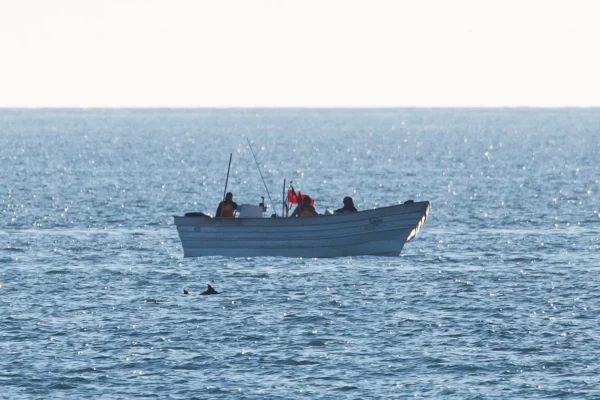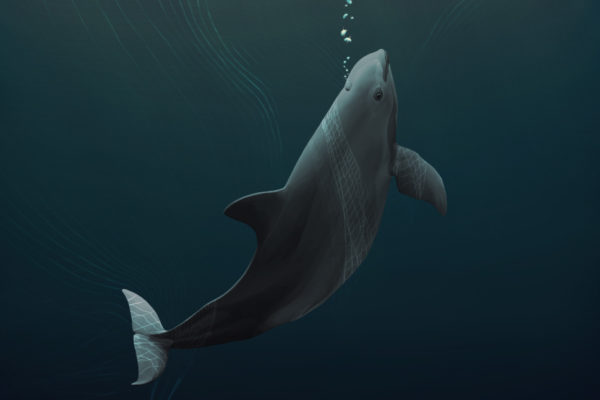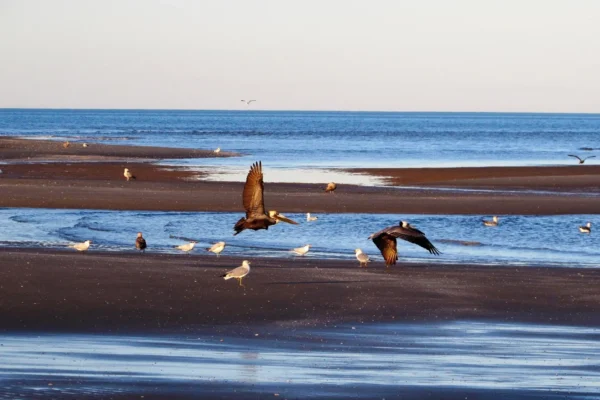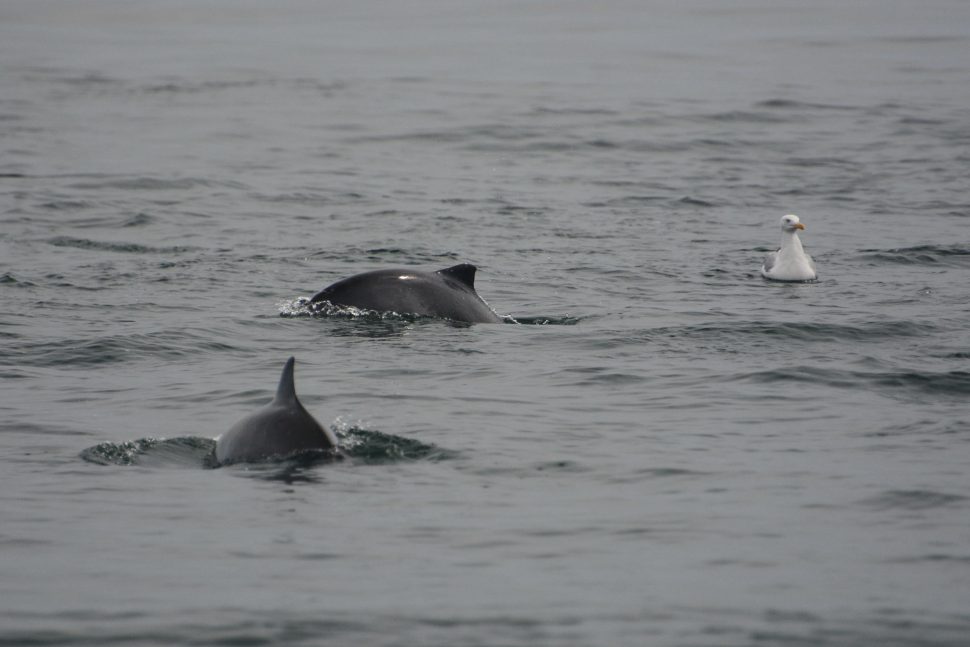
With an estimated 700,000 animals throughout its range, the harbour porpoise seems to be doing well. This species is widely distributed; it can be found in all of the world’s oceans. But in parts of its range, populations are in decline. The Baltic Sea harbour porpoise is one such population and listed by the IUCN as “critically endangered”, meaning that it is on a path to extinction. A 2016 report published by ASCOBANS estimated the population to be less than 500 individuals strong, and some earlier surveys resulted in even more pessimistic estimates of less than 250 animals.
Small cetaceans like the harbour porpoise are susceptible to entanglement in fishing nets, a threat that has driven this sub-population to the brink of extinction. Globally, about 600,000 marine mammals get entangled in fishing nets every year, about half of them whales, porpoises and dolphins ─ and of those, many are harbour porpoise. Once entangled, the animals have virtually no chance to escape and drown within minutes. And while in parts of the world, by-catch has been reduced significantly over the years, it remains the single most significant threat to small cetaceans.
Other threats remain a problem
While active fishing gear poses the biggest threat, abandoned or derelict fishing nets (also called “ghost nets”) also catch porpoises. As they continue to do what they were once designed for – catch animals – the heavy nets sink to the bottom where the animals caught are consumed. Once the net is light enough again, it begins to float back to the surface where the cycle begins anew. This can go on for a very long time and a single net can kill a large number of animals over time.
Ocean pollution also poses a significant threat to harbour porpoise. Persistent organic pollutants (POPs) and heavy metals are consumed with their prey and stored in their fat reserves over time. They are mobilized if the animals go into starvation and are believed to lead to a weakened immune response, which in turn can make the animals more vulnerable to infections and disease.
Ocean noise is another major issue. Harbour porpoise depend on their very acute sense of hearing to navigate and communicate. But noise from construction, shipping, seismic surveys to military sonar can interfere with that sense.
Food depletion is a threat as well. Harbour porpoise need to consume a lot of prey in order to survive. Their high metabolic rate requires them to feed around the clock. The over-exploitation of fish stocks means that their preferred prey may not always be available, or that they may need to invest more effort to catch it. They may have to rely on lower-quality prey, and that may have effects on their body condition.
States along the Baltic Sea working to save the population
The Agreement on the Conservation of Small Cetaceans of the Baltic and North Seas (ASCOBANS) entered into force in 1994, and in 2009, the Jastarnia Plan, a Recovery Plan for Baltic Harbour Porpoises came into effect. Under that plan, the ASCOBANS signatory states have since begun to take measures to reduce by-catch in active fishing nets and to remove ghost fishing gear. The issue of underwater noise is also being investigated, though we are only just beginning to understand what impact man-made sounds have on cetaceans. Researchers have also taken on the research-intensive task to identify habitats that are important to the Baltic Sea harbour porpoise population, and steps are being taken to designate those areas as marine protect areas.
A day to remind us that extinction is real and forever
ASCOBANS declared the third Sunday in May of each year as the “International Day of the Baltic Harbour Porpoise” (IDBHP) in order to raise awareness of the critical situation for the Baltic Sea population of harbour porpoise (Phocoena phocoena) ─ the only species of cetacean native to the Baltic Sea.
The International Day of the Baltic Harbour Porpoise serves to remind us that yet another population of porpoise is on the brink of extinction. With a population of less than 250 individuals, the Baltic Sea Harbour Porpoise appears to be following the same pathway as the Vaquita in Mexico. Both are Critically Endangered, both have small ranges, and the cause of their demise is entanglement in fishing nets. Entirely preventable – yet occurring – the indiscriminant nets catch porpoise both young and old, and seal their fate as they drown fighting to free themselves from the net. Please join us in our efforts to raise awareness of the plight of porpoise around the world – particularly those that need our help today to save them from extinction and secure their place in our oceans.
Dr. Anna Hall, President, Porpoise Conservation Society
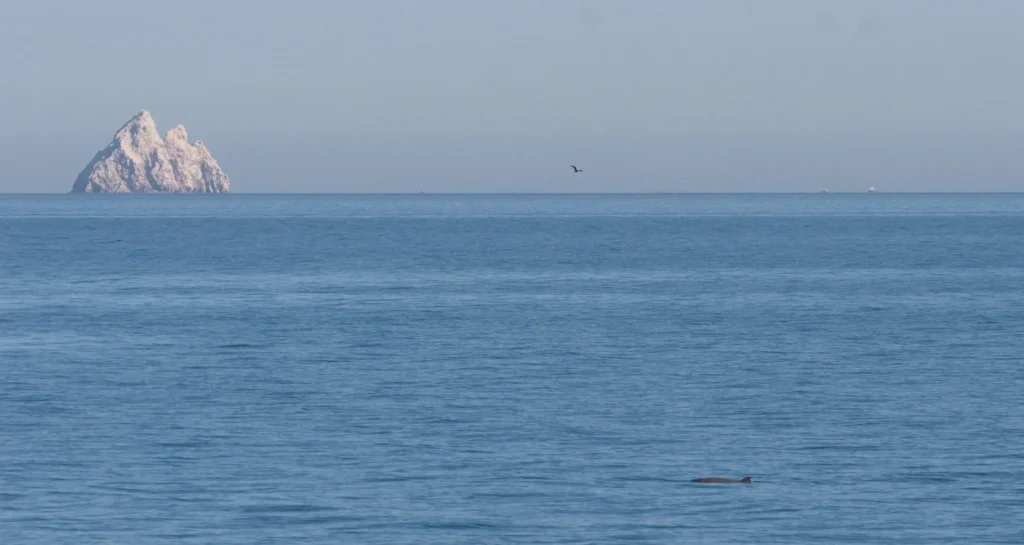
We can help porpoises worldwide by making responsible consumer decisions
There is one very easy way to help the world’s porpoises and other small cetaceans: We can make sustainable choices when buying fish or shellfish. Sustainable seafood programs like MSC (worldwide), Seafood Watch (United States) or Ocean Wise and SeaChoice (Canada) help consumers identify products from well-managed fisheries that avoid or reduce accidental by-catch.
References and Further Reading
- (2016). ASCOBANS Recovery Plan for Baltic Harbour Porpoises - Jastarnia Plan (2016 Revision). .
- (2009). Recovery Plan for Baltic Harbour Porpoises Jastarnia Plan (Revision). .
- Beineke, Andreas ; Siebert, Ursula ; McLachlan, Michael ; Bruhn, Regina ; Thron, Kristina ; Failing, Klaus ; Müller, Gundi ; Baumgärtner, Wolfgang (2005). Investigations of the potential influence of environmental contaminants on the thymus and spleen of harbor porpoises (Phocoena phocoena). Environmental Science & Technology.
- Jepson, Paul D. ; Bennett, Peter M. ; Allchin, Colin R. ; Law, Robin J. ; Kuiken, Thijs ; Baker, John R. ; Rogan, Emer ; Kirkwood, James K. (1999). Investigating potential associations between chronic exposure to polychlorinated biphenyls and infectious disease mortality in harbour porpoises from England and Wales. Science of The Total Environment.
- Andersen, S. (1970). Auditory sensitivity of the harbour porpoise Phocoena phocoena. Investigations on Cetacea.
- Nowacek, Douglas P. ; Thorne, Lesley H. ; Johnston, David W. ; Tyack, Peter L. (2007). Responses of cetaceans to anthropogenic noise. Mammal Review.
- Dyndo, Monika ; Wiśniewska, Danuta Maria ; Rojano-Doñate, Laia ; Teglberg Madsen, Peter (2015). Harbour porpoises react to low levels of high frequency vessel noise. Scientific Reports.
- Spitz, Jérôme ; Rousseau, Yann ; Ridoux, Vincent (2006). Diet overlap between harbour porpoise and bottlenose dolphin: An argument in favour of interference competition for food?. Estuarine, Coastal and Shelf Science.
